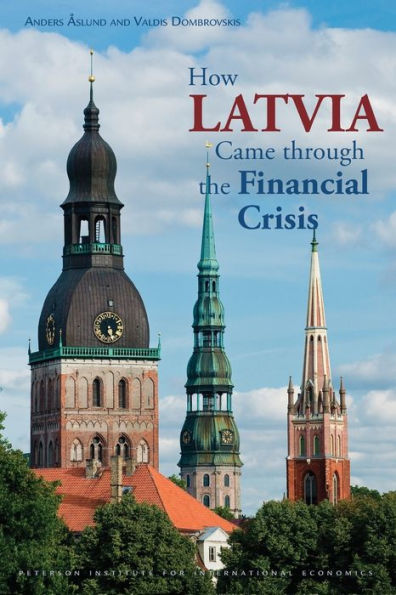How Latvia Came Through the Financial Crisis
Latvia stands out as the East European country hardest hit by the global financial crisis; it lost approximately 25 percent of its GDP between 2008 and 2010. It was also the most overheated economy before the crisis. But in the second half of 2010, Latvia returned to economic growth. How did this happen so quickly? Current Latvian Prime Minister Valdis Dombrovskis, who shepherded Latvia through the crisis, and renowned author Anders Åslund discuss why the Latvian economy became so overheated; why an IMF and European Union stabilization program was needed; what the Latvian government did to resolve the financial crisis and why it made these choices; and what the outcome has been. This book offers a rare insider's look at how a national government responded to a global financial crisis, made tough choices, and led the country back to economic growth.
1109689346
How Latvia Came Through the Financial Crisis
Latvia stands out as the East European country hardest hit by the global financial crisis; it lost approximately 25 percent of its GDP between 2008 and 2010. It was also the most overheated economy before the crisis. But in the second half of 2010, Latvia returned to economic growth. How did this happen so quickly? Current Latvian Prime Minister Valdis Dombrovskis, who shepherded Latvia through the crisis, and renowned author Anders Åslund discuss why the Latvian economy became so overheated; why an IMF and European Union stabilization program was needed; what the Latvian government did to resolve the financial crisis and why it made these choices; and what the outcome has been. This book offers a rare insider's look at how a national government responded to a global financial crisis, made tough choices, and led the country back to economic growth.
21.95
In Stock
5
1

How Latvia Came Through the Financial Crisis
200
How Latvia Came Through the Financial Crisis
200
21.95
In Stock

Product Details
| ISBN-13: | 9780881326024 |
|---|---|
| Publisher: | Peterson Institute for International Economics |
| Publication date: | 05/15/2011 |
| Pages: | 200 |
| Product dimensions: | 5.90(w) x 8.90(h) x 0.40(d) |
| Age Range: | 18 Years |
About the Author
From the B&N Reads Blog
